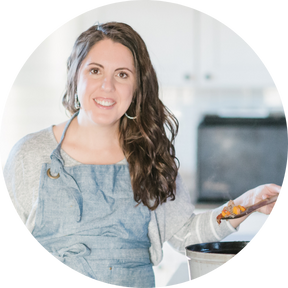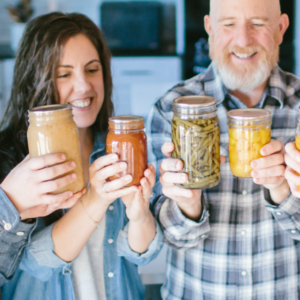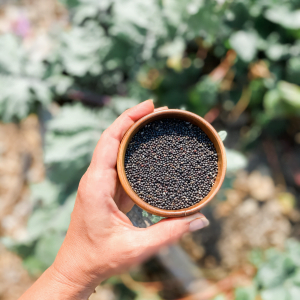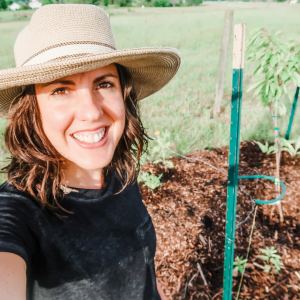How to Raise Pastured Poultry, Part 1: DIY Brooder Pen
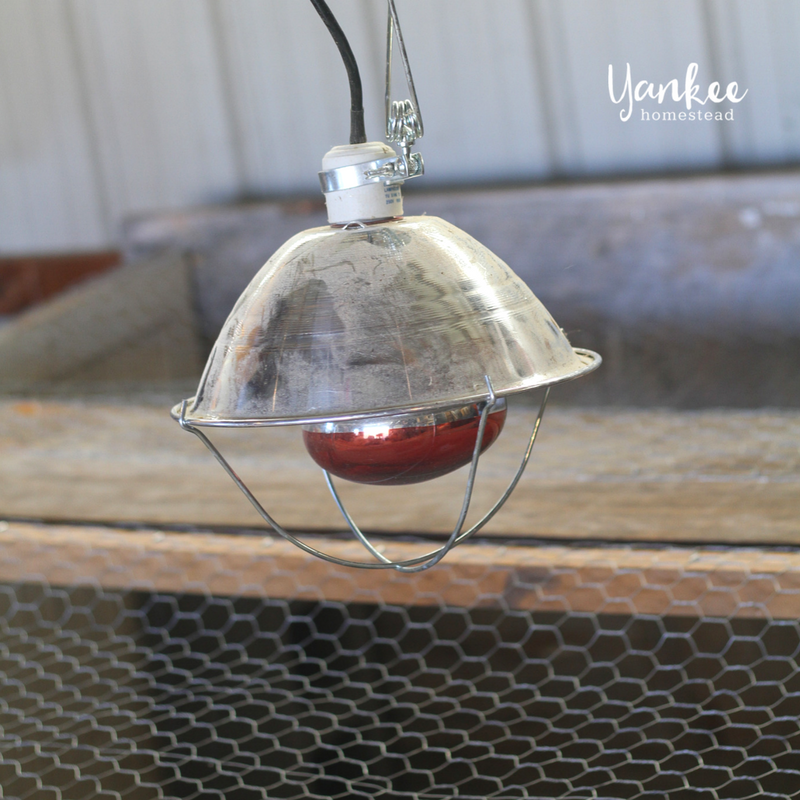
Plan your best garden with simple, step-by-step instructions!
This post may contain affiliate links, which means I make a small commission at no extra cost to you.
See my full disclosure here.
It’s going to be a crazy next few months, y’all, what with moving, installing new gardens, mending fences, and adding pigs, more laying hens and more meat birds to our homestead. On top of all the renovations in the new house.
Oh, and did I mention we’re thinking of boarding horses? Yep, it’ll be a learning curve, for sure.
Despite the initial mayhem, we’re determined to continue and even expand our pastured poultry production in order to grow as much of our family’s food as possible. That’s the whole goal of moving to the new farm with more land.
Mr. Native Texan is in charge of the animals on our homestead and this week he’s taking over the blog to tell us how to raise pastured poultry…

Pastured Poultry is Best
It’s spring again and at the Yankee Homestead that means we’re gearing up for another round of pastured poultry. We’re excited to move to the new farm, where we’ll have even more room to raise even more chickens.
A recent story citing the health concerns in US factory raised meat solidified my commitment to raising as much of our own meat as possible, and being willing to spend a little extra to buy any “clean” meat we aren’t raising ourselves.
Kathleen shared more details about why we don’t buy chicken at the grocery store.
This year the plan is to raise even more pastured poultry and to add pigs to the homestead. Beef will come next, hopefully this year but maybe not until next year.
Let’s jump into the specifics of how to raise pastured poultry. Here’s what you need to know…
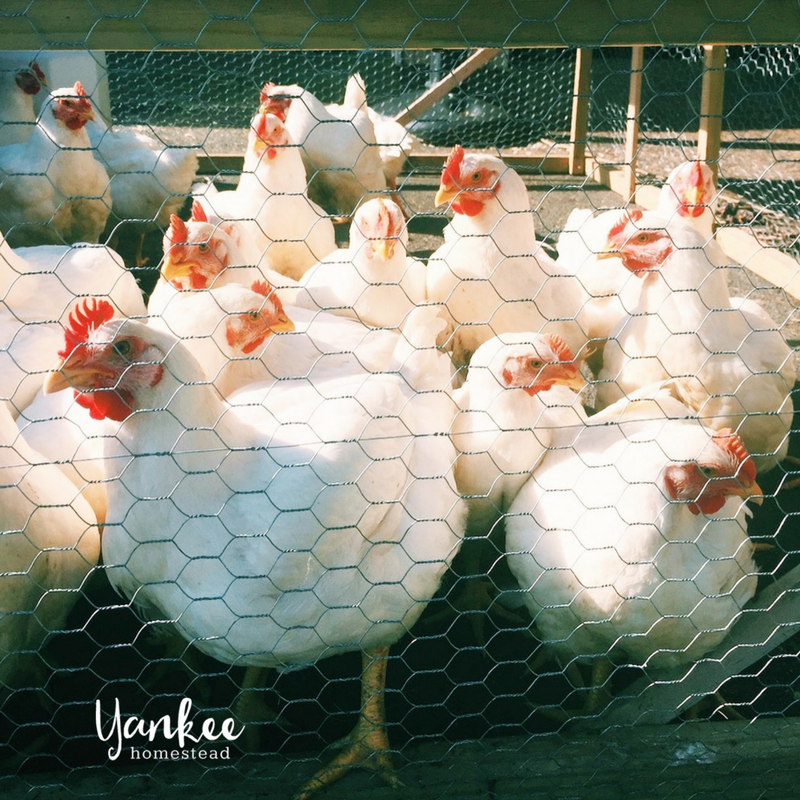
How to Raise Pastured Poultry
You’ll need to prepare two main stations:
- Brooding pen – where the chicks will stay for the first three weeks
- Chicken tractor – where you’ll pasture them from about about three weeks to eight or nine weeks
You will also need:
- Heat lamps
- Non-GMO starter feed
- Feed trough
- Watering system
- Sweetener for the water (sugar or honey)
- Wood shavings, straw, or newspaper for bedding
- And chicks!

How to choose a watering system
I like this 7 gallon chicken waterer for its simplicity, but there are other options. Another popular system is a Bell-Matic poultry waterer that works with a five-gallon bucket.
Where to buy chicks
Our chicks come from Murray McMurray. We chose Jumbo Cornish X Rocks last year and plan to order the same breed again this year.
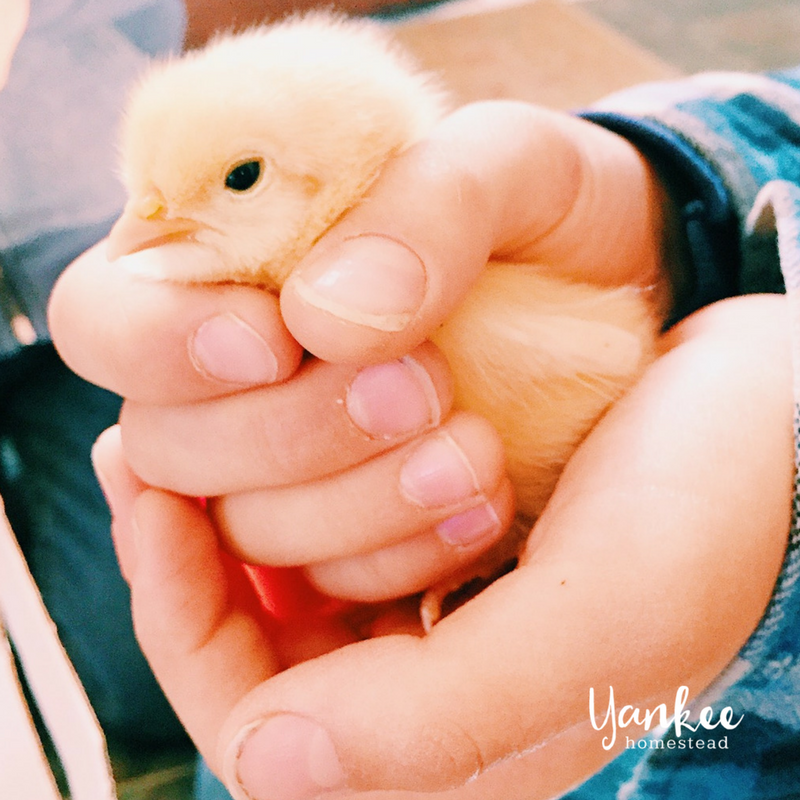
Part 1—The Brooding Pen
First, you need a good brooding pen. This is where the chicks will live for about three weeks. A brooding pen can be constructed in any number of ways or purchased online.
Here’s how I made my brooding pen…
A note from Kathleen: It’s not very pretty, but it gets the job done. Mr. NT’s resourcefulness saved us from having to purchase additional materials to build a pen! It’s always a plus to use what you already have.

Brooding pen supplies
- 4 old doors (ours are 6’6″)
- 4 cinder blocks
- 4-8 bungie cords
- Three 8’ 2×2 boards or available scrap wood
- 4′ chicken wire (about 16′)
- Staples & staple gun
- Screws & screw gun
- 2 heat lamps
- Extension cord(s)
- Feeder
- Water system
Instructions
1. Set up the four doors in a rectangle configuration.
2. Stand cinder blocks in the corners.
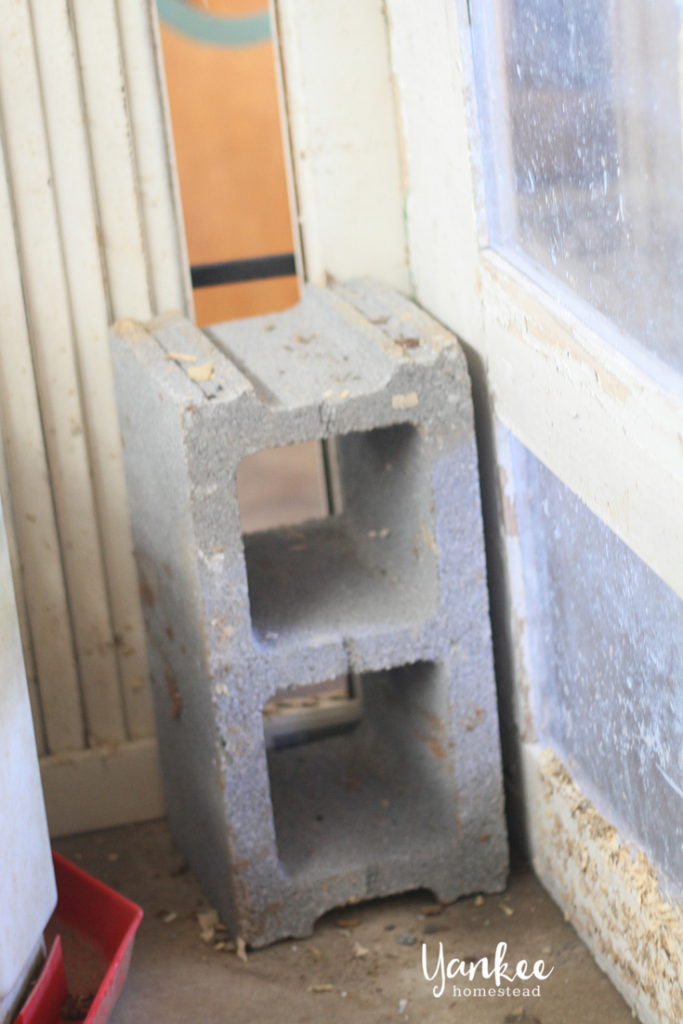
3. Strap the doors together with bungie cords. If you have enough cords, you can wrap them all the way around. Otherwise, you can add screws to the doors and hook the cords to the screws.
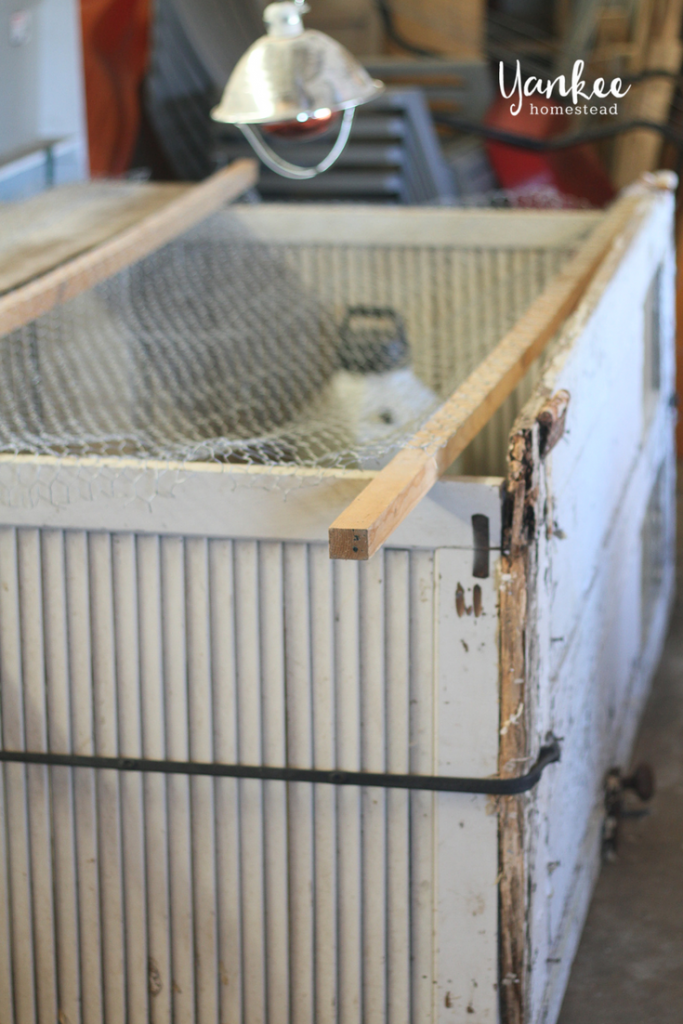
4. Cover the back half of the pen by stapling chicken wire to the rear door and along the side doors. Lay one length of scrap wood (I used a random 1×6 board) across the middle of the pen and staple the chicken wire to it. This forms a stationary lid for the rear half of the pen. It will keep the chicks in and predators out.
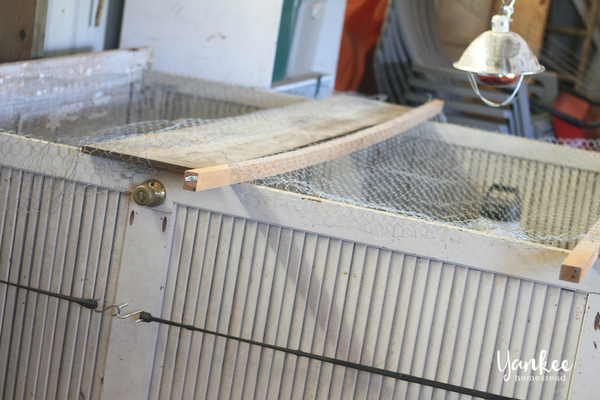
5. Form a top for the front half of the brooding pen to act as a lid that can be opened and closed. Use two lengths of scrap wood (or 2x2s) as the sides and staple chicken wire between them.
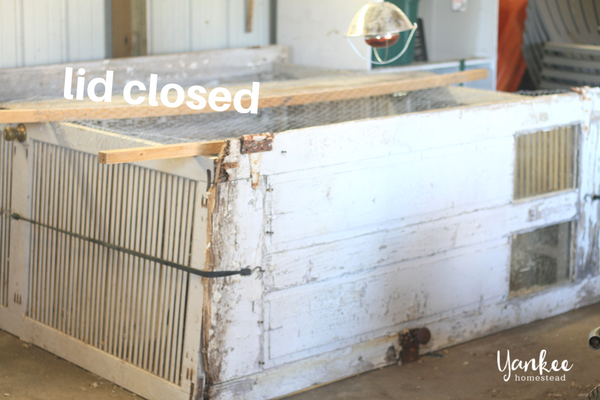
To close the pen, stretch this lid across the front half. To open the lid, lift the front piece of wood like a handle and fold the lid back.
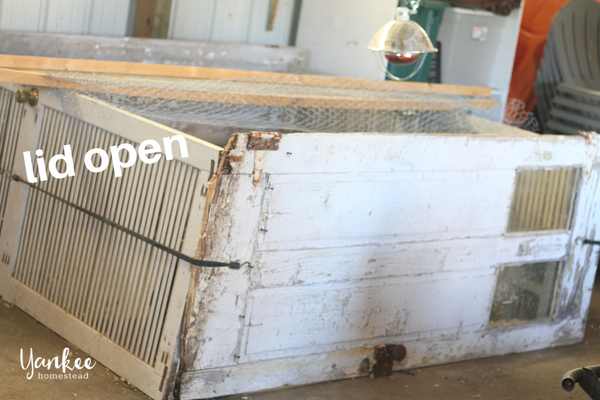
6. Put 1-2 inches of wood shavings down on the ground. Make sure it’s not so deep that your chicks can’t easily walk.
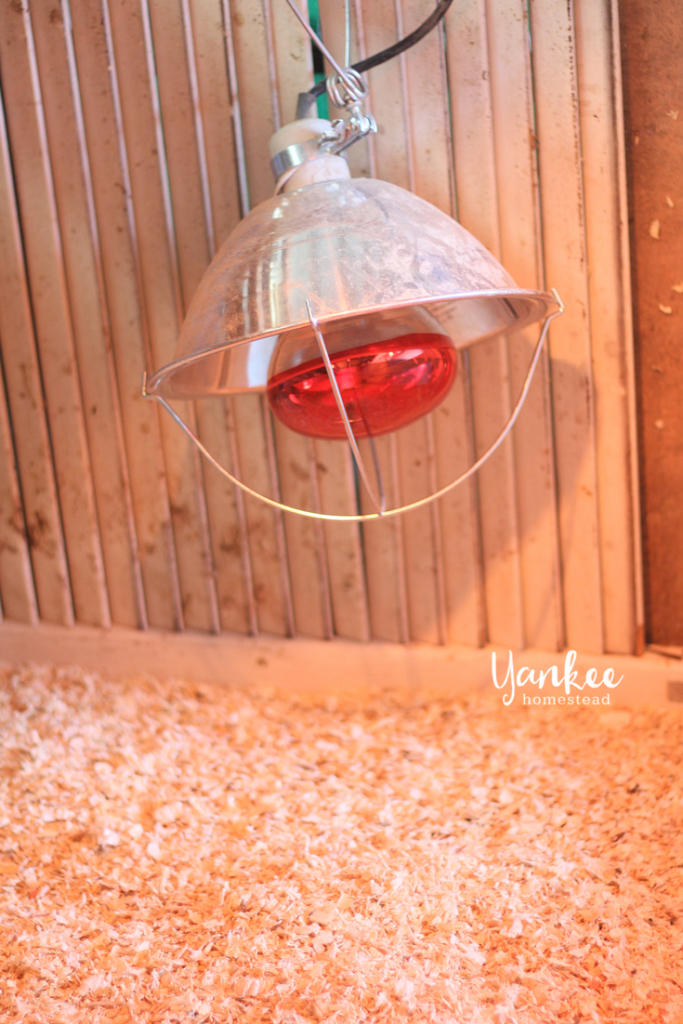
7. Suspend your heat lamps above the brooding pen. If it’s still cold outside, you may need to place a heat lamp just inside the chicken wire especially when the chicks are very young. You want to keep the chicks’s environment at about 90 degrees Fahrenheit.
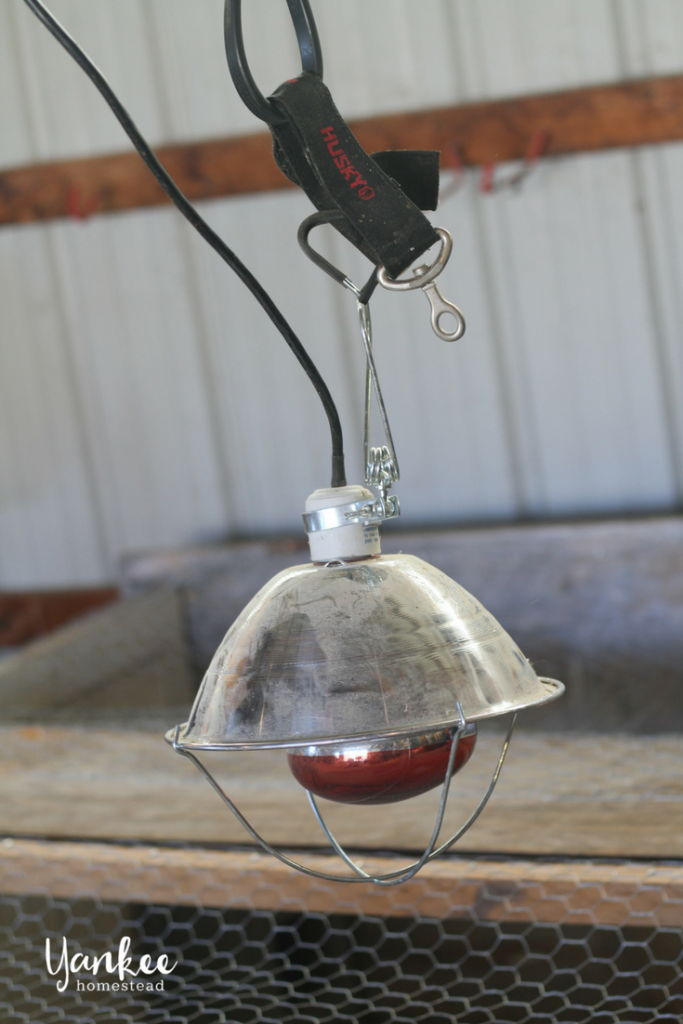
The first three weeks: 8 important steps
1. Teach them to find food and water
When you receive your chicks from a hatchery they will have just come out of the shell and will not have had anything to eat or drink prior to arriving. This is the most critical time in the life cycle of your chickens.
As soon as they arrive, it’s important to take each chick and physically show it the water and food. You do this by dipping their beaks into each.
2. Sweeten their water
Sugar is probably the easiest, but honey is another option. I add about a cup of sugar to the 7 gallon container to provide a little extra energy for the chicks. You only have to do this for the first few days.
3. Provide immune support (optional, but recommended)
I also add 1 drop of oregano essential oil per gallon of water to keep their immune systems strong.
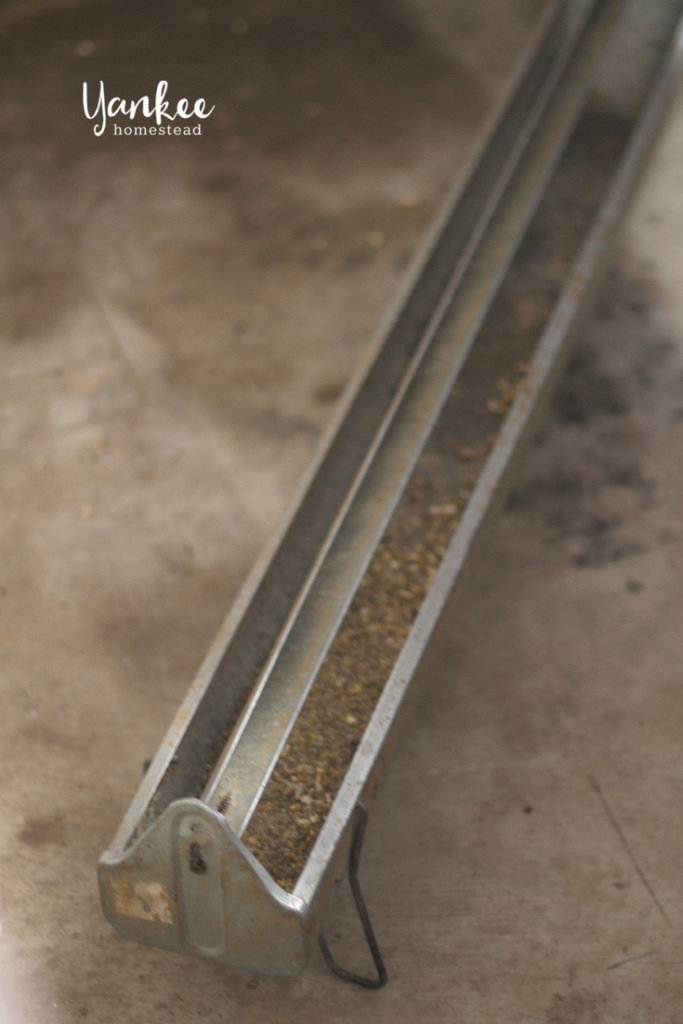
4. Provide feed
I recommend a non-GMO feed from a reputable source (we use Dawsons Gap) and I feed my chicks as much as they will eat. Make sure the feeding trough doesn’t allow the chicks enough room to sit in it and soil the feed.
5. Keep them warm
As the chicks grow, and depending on the weather, you’ll need to raise or lower the heat lamps accordingly. The chicks will let you know how much heat they need. If they are running around the pen and scratching the shavings, then your heat is at a good level.
If they are all huddled up under the heat lamp consistently, then the pen is too cold. If they are all cowering in a corner as far away from the heat lamp as possible, the pen is too hot.
Just watch them and they’ll let you know what they need. You’re aiming to maintain the temperature in their pen at about 90 degrees Fahrenheit.
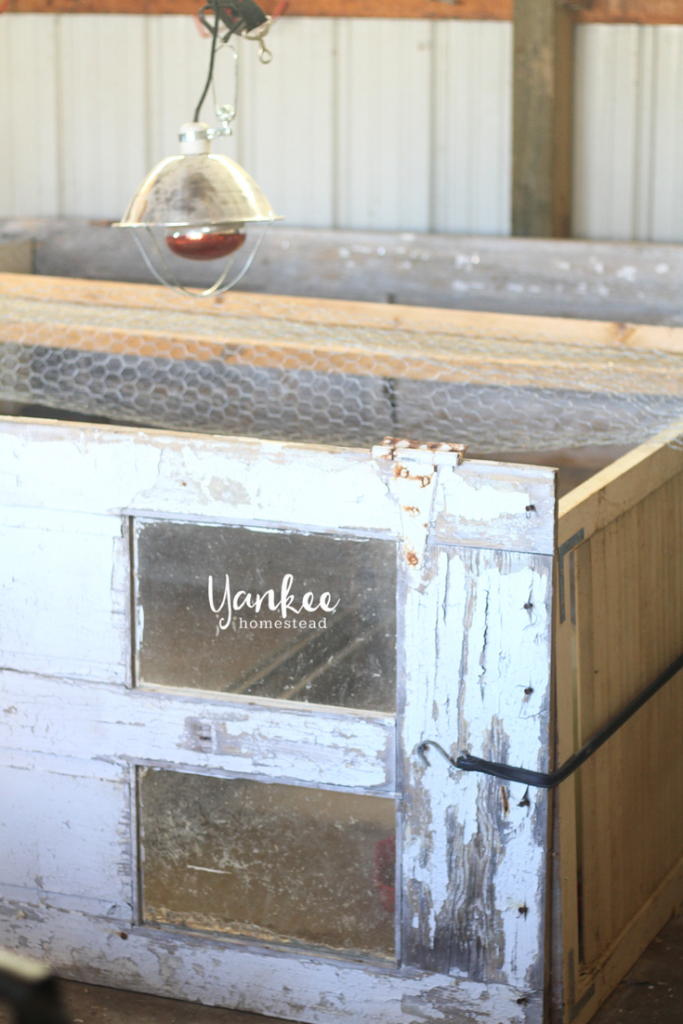
6. Keep the pen clean
I keep my brooding pen in an outbuilding with a concrete floor and add shavings approximately every other day or as needed. It’s imperative to keep the pen clean.
7. Check on your chicks often
Plan to check on your chicks at least twice a day to provide feed and water, to check on their bedding, and to monitor their health and the temperature of their pen.
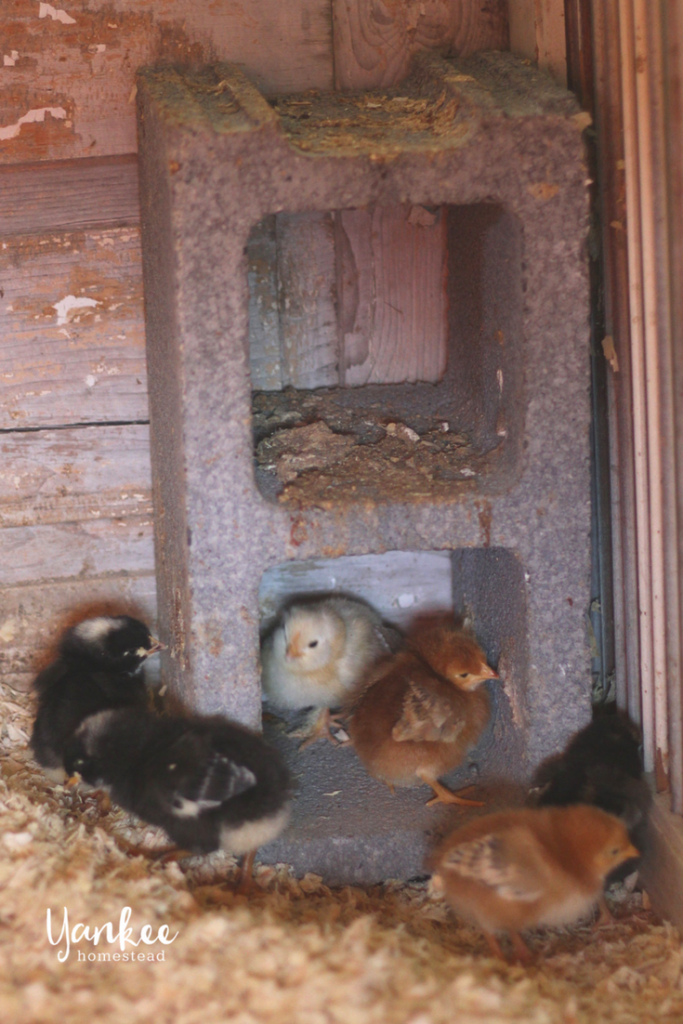
8. Watch out for…
Chicks can die from a condition we affectionately call “poop-butt”. This is when a chicken’s own feces build up and harden on its rear, which prevents it from expelling waste.
You should check your chickens daily for this. If you find a chick exhibiting signs of “poop-butt” simply take a rag with warm water and gently clean it off. This should remedy the situation.
>>Additional tips for care can be found here.
Part 2—The Chicken Tractor
When the chicks are three weeks old, it’s time to move them outside to the chicken tractor. More on that in my next post about how to raise pastured poultry…
Update: here’s the next post…How to Raise Pastured Poultry, Part 2: DIY Chicken Tractor.
More from the meat bird archives:
- How to Raise Pastured Poultry, Part 2: DIY Chicken Tractor
- The Real Cost of Raising Meat Birds: Year One
- The Real Cost of Raising Meat Birds: Year Two
- Our Big Meat Bird Mistake: How We Accidentally Killed 35 Chickens
- My Pastured Poultry System: How to Use Up Every Last Bit of a Whole Chicken
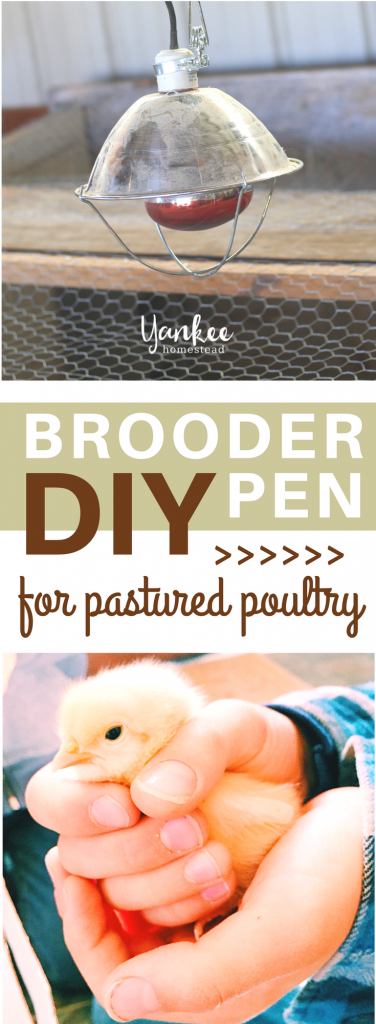

Sign up NOW for my best tips delivered weekly to your inbox!
You’ll also get instant access to my library of free ebooks and resources.
